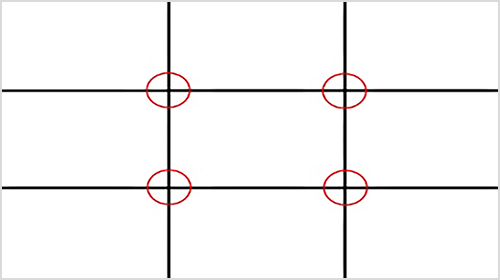The Rule of Thirds
Overview
In this video, I discuss the “Rule of Thirds”, which is a concept that has been used by great painters for hundreds of years to compose effective and impactful art. The idea is to position important elements in particular areas of the canvas or screen to draw the viewer's attention. I provide an example and suggest viewers try recording videos to see where their heads are positioned. It is important to try out alternatives until you are satisfied.
Stand in the right spot: The rule of thirds
So what is the right spot? Well there are no absolute rules. But there are some helpful guidelines and that is what I will describe here.

Please look at my simple drawing above.👆🏻
Generally, the right spot is just where the cross is, above the guy who is waving.
When we see any video, we are impacted in the first few seconds. This happens first subconsciously and then consciously. And it is instantaneous.
Artists and photographers know this. So they arrange the picture very carefully.
When we see a picture our eyes tend to move to the top left or top right. Then our eyes move to other parts of the picture and we judge the overall scene. The top right or left, where the guy is waving, (above right) is a good place to have your head placed. It is the position of power.
Background
Finding power positions on pictures is nothing new. Michelangelo knew about it and other artists.
What is the Rule of Thirds?
The basic principle behind the rule of thirds is to imagine breaking an image down into thirds (both horizontally and vertically) so that you have 9 parts. As follows. As you are taking an image you would have done this in your mind through your viewfinder or in the LCD display that you use to frame your shot. With this grid in mind the ‘rule of thirds’ now identifies four important parts of the image that you should consider placing points of interest in as you frame your image.

Summary
- It is a helpful tip to place yourself in the frame so that you are roughly on a level of the 2 higher, red circles above. This is no hard and fast rule.
- Some people, like me, like to stand with their head between the two red circles on top. I personally vary my position between this central position and the top right circle.
What is the point of learning about the rule of thirds?
We generally find that the best speakers on video position themselves carefully to give themselves authority in the eyes of their audience.
Try it out for yourself and see what feels best for you and ask your audience for feedback. How do you come across to your clients?